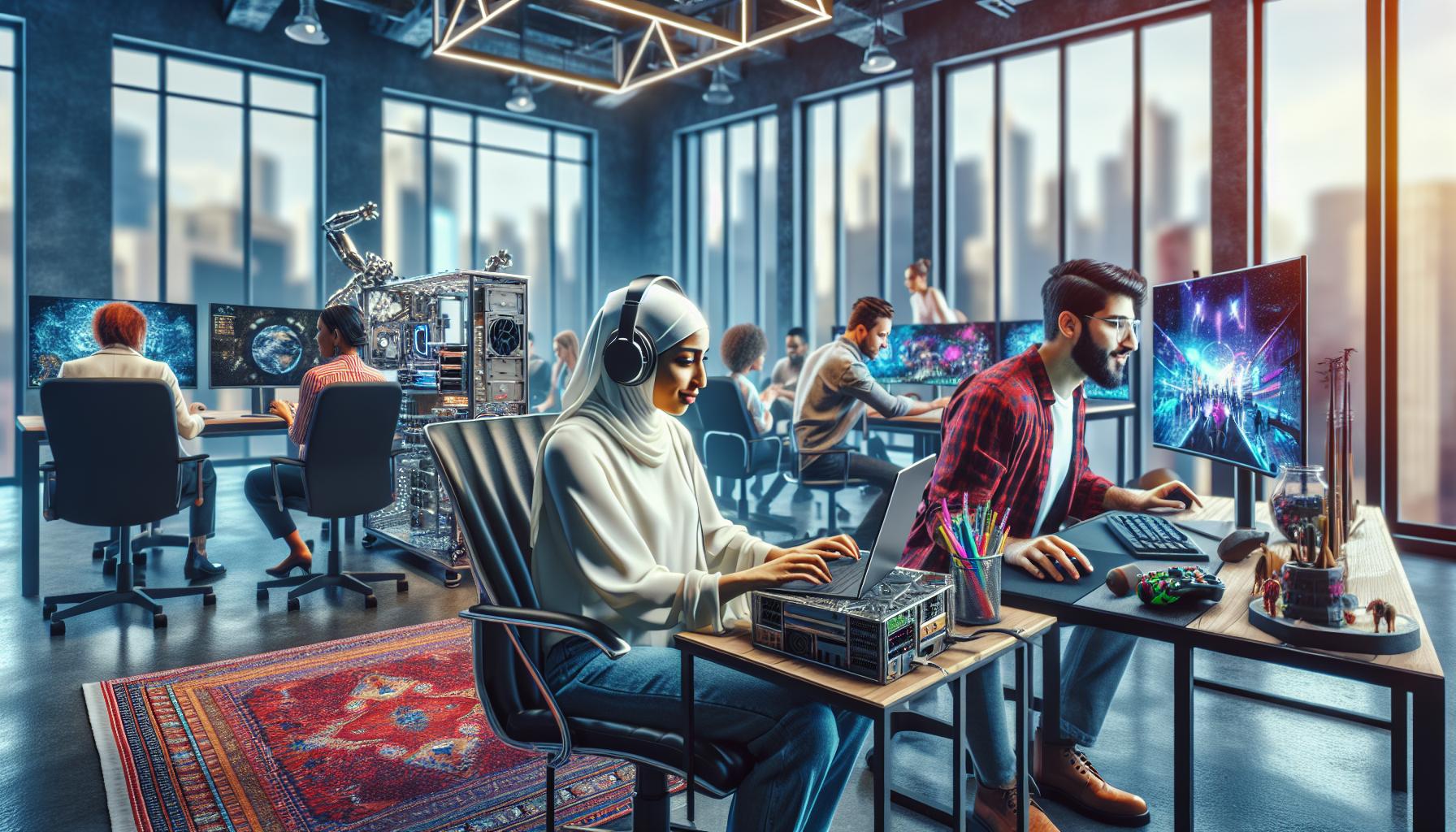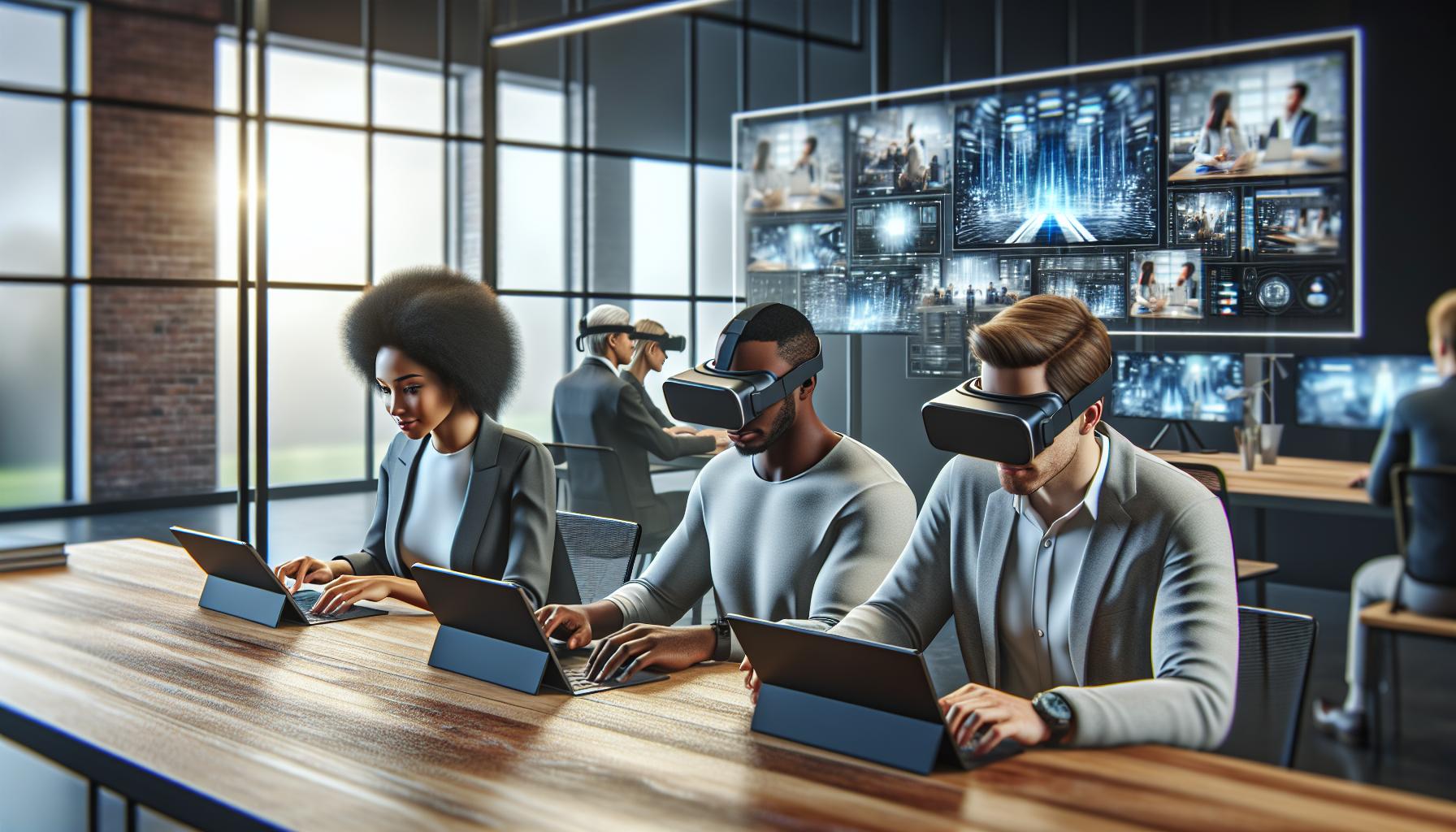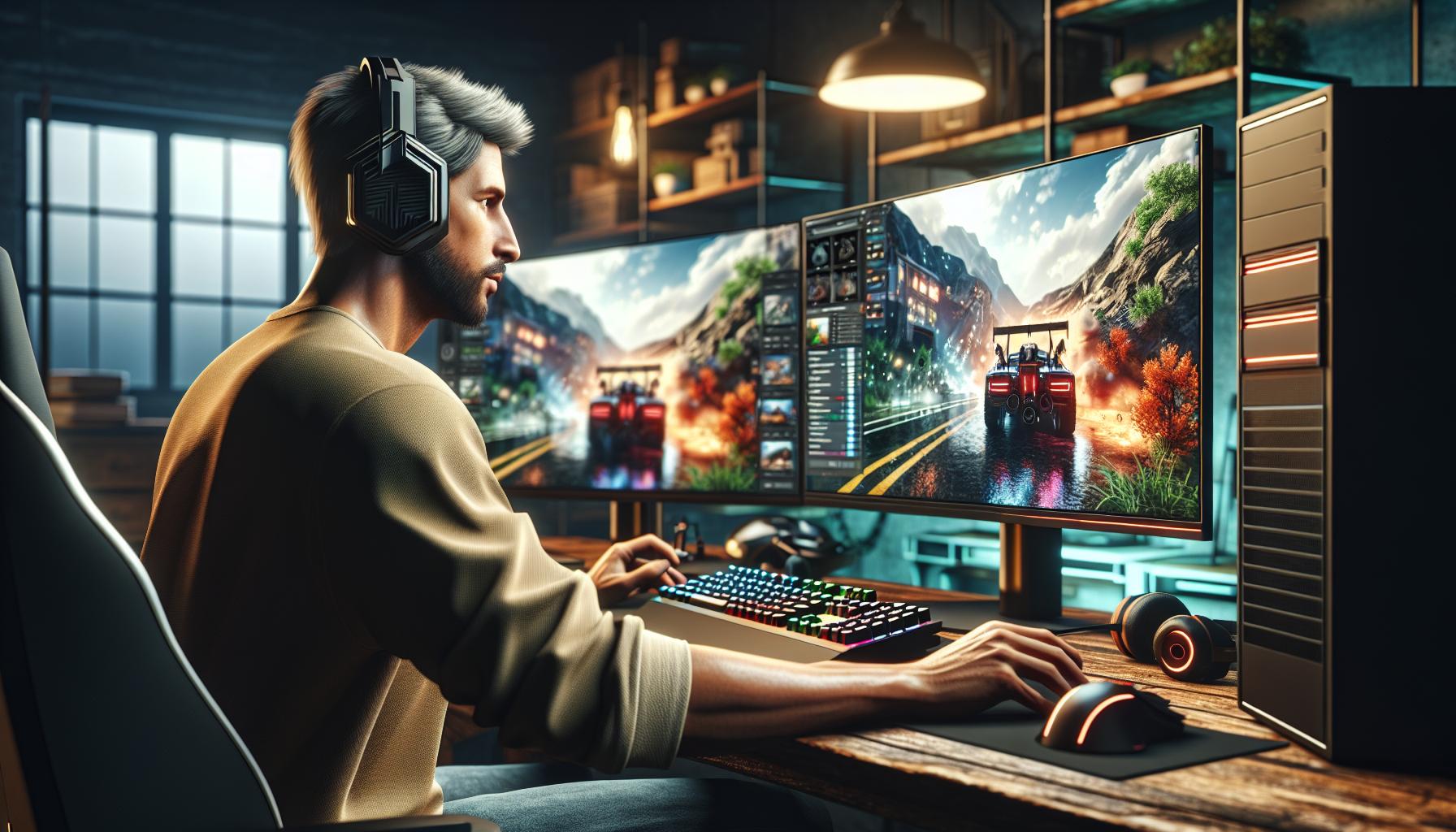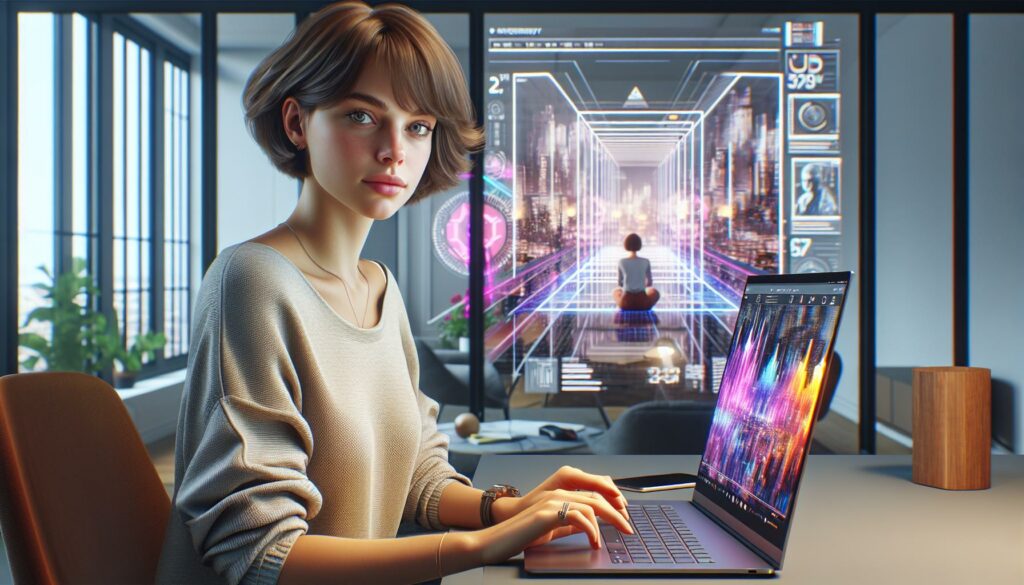Virtual reality doesn’t always mean strapping a bulky headset to your face and stumbling around your living room. Non immersive VR offers a unique window into virtual worlds through everyday screens like computers monitors tablets and smartphones – no fancy gear required.
Think of non immersive VR as virtual reality’s laid-back cousin. It’s the technology that lets gamers explore 3D environments medical students practice procedures and architects visualize designs all while staying firmly planted in the real world. This accessible approach to VR has become increasingly popular in education training and entertainment sectors where full immersion isn’t always practical or necessary.
Non Immersive VR
Non-immersive virtual reality delivers virtual experiences through standard computer displays without fully isolating users from the physical world. This technology creates interactive 3D environments while maintaining awareness of the surrounding physical space.
Key Components of Non Immersive VR
- Display Systems
- Computer monitors
- Tablets
- Smartphones
- Large projection screens
- Input Devices
- Mouse
- Keyboard
- Touchscreens
- Gaming controllers
- Processing Hardware
- Graphics cards
- CPU systems
- Network interfaces
- Audio processors
- Software Elements
- 3D rendering engines
- User interface systems
- Interactive applications
- Real-time response modules
| Feature | Non-Immersive VR | Immersive VR |
|---|---|---|
| Hardware Cost | $200-1,000 | $400-2,000+ |
| Setup Time | 1-5 minutes | 15-30 minutes |
| Space Required | Desk space | Dedicated room |
| Learning Curve | Low | Moderate to high |
- Non immersive VR uses existing displays while immersive VR requires headsets
- Users maintain environmental awareness in non-immersive systems
- Non-immersive platforms offer easier multitasking capabilities
- Immersive systems provide complete sensory isolation
- Non-immersive solutions present lower motion sickness risks
Popular Non-Immersive VR Applications

Non-immersive VR applications span diverse industries from entertainment to healthcare. These applications leverage standard displays and input devices to create interactive virtual experiences without full sensory isolation.
Gaming and Entertainment
Non-immersive VR gaming platforms include Roblox, Minecraft VR mode, and Second Life. Players interact with 3D environments using keyboards, mice, or game controllers while viewing content on standard monitors. Racing simulators like Assetto Corsa integrate steering wheel peripherals with desktop displays, creating realistic driving experiences. Mobile games such as Pokemon GO use smartphone screens and cameras to overlay virtual elements onto real environments. Traditional PC games incorporate VR elements through mouse-controlled camera movements and 3D rendering, exemplified by titles like Microsoft Flight Simulator.
Education and Training
Educational institutions implement non-immersive VR through interactive learning platforms like Labster and PhET simulations. Students access virtual laboratories on classroom computers to conduct physics experiments, explore chemical reactions, or study biological processes. Corporate training programs utilize desktop-based simulations for employee development in areas such as:
- Equipment operation training on standard monitors
- Customer service scenarios through web browsers
- Safety procedure practice via interactive software
- Technical skill development using 3D modeling programs
- Digital anatomical models viewed on tablets
- Patient data visualization through hospital workstations
- Rehabilitation exercises monitored via webcams
- Medical education modules on desktop computers
Benefits of Non-Immersive VR Technology

Non-immersive VR technology offers distinct advantages in various sectors. Its practical benefits range from financial considerations to user comfort factors.
Cost-Effectiveness
Non-immersive VR systems operate on standard computers tablets smartphones, eliminating specialized hardware costs. Organizations save 60-80% on equipment expenses compared to immersive VR setups. The technology uses existing infrastructure, such as desktop computers monitors keyboards mice, reducing initial investment requirements. Maintenance costs remain minimal due to familiar hardware components readily available in the market. Software licenses for non-immersive VR applications typically cost 30-50% less than their immersive counterparts.
Accessibility and Ease of Use
Users access non-immersive VR through familiar devices interfaces, requiring minimal training time. The average learning curve spans 2-3 hours, compared to 8-10 hours for immersive systems. Standard input devices like mice keyboards touchscreens enable intuitive navigation control. Multiple users interact simultaneously through networked systems, fostering collaboration. The technology accommodates diverse user groups, including students professionals casual users, across different skill levels age ranges.
Reduced Motion Sickness
Non-immersive VR minimizes visual vestibular conflict by maintaining user awareness of physical surroundings. Studies report only 5-10% of users experience mild discomfort compared to 40-70% in immersive VR. The fixed screen position reduces spatial disorientation common in head-mounted displays. Users maintain control over viewing angles distances, adjusting comfort levels as needed. Extended usage sessions lasting 4-6 hours prove comfortable for 90% of users.
Technical Requirements and Setup

Non immersive VR systems operate on standard computing devices with specific hardware and software configurations. These setups enable users to experience virtual environments without specialized VR equipment.
Hardware Specifications
A standard desktop computer or laptop requires a minimum quad-core processor running at 2.5GHz or higher for smooth VR operations. Graphics cards with 4GB VRAM support basic non immersive VR applications, while 8GB VRAM delivers enhanced performance for complex simulations. RAM requirements start at 8GB for basic applications, with 16GB recommended for professional use. Display resolution of 1920×1080 pixels ensures clear visualization, though 4K displays offer superior detail. Input devices include:
- Gaming mice with 1000Hz polling rates
- Keyboards with anti-ghosting features
- Gamepads supporting DirectInput protocols
- Touch-enabled displays for mobile devices
- Webcams with 720p resolution for motion tracking
Software Platforms
Popular non immersive VR platforms accommodate various user requirements across different operating systems. Unity3D supports cross-platform development with built-in VR templates. Unreal Engine provides advanced rendering capabilities for photorealistic environments. Software compatibility includes:
- Browser-based platforms using WebGL technology
- Standalone applications with OpenVR support
- Mobile development frameworks like Android SDK
- Cross-platform engines supporting multiple devices
- Cloud-based solutions for remote access
| Platform | Minimum SDK Version | Recommended OS |
|---|---|---|
| Unity3D | 2019.4 LTS | Windows 10/macOS |
| Unreal | 4.27 | Windows 10 |
| WebVR | 1.1 | Chrome/Firefox |
Current Limitations and Challenges
Non-immersive VR systems face several constraints that impact their effectiveness and user adoption. These limitations span both user experience factors and technical capabilities.
User Experience Constraints
Limited depth perception creates challenges in accurately perceiving spatial relationships within virtual environments. Users experience reduced sensory feedback compared to fully immersive systems, particularly in tactile sensations and physical presence. The desktop interface restricts natural movement and interaction, forcing users to rely on conventional input devices like mice and keyboards. Screen size limitations on standard displays impact the field of view, reducing peripheral vision and spatial awareness. Extended screen time leads to eye strain for 65% of users after 2 hours of continuous use. Social interaction barriers emerge in collaborative environments due to limited avatar expressiveness and non-verbal communication options.
Technical Boundaries
Graphics processing capabilities on standard devices limit the complexity of 3D environments to 500,000 polygons per frame. Network latency affects real-time interactions, with delays exceeding 100ms disrupting user experience. Standard displays restrict refresh rates to 60Hz, causing motion blur during rapid movements. Input device precision varies, with conventional mice offering only 2D control in 3D spaces. Resource limitations on mobile devices reduce rendering quality by 40% compared to desktop systems. Memory constraints restrict texture resolution to 2K on standard hardware. Browser-based applications face performance bottlenecks with complex physics simulations. Cross-platform compatibility issues affect consistent user experiences across different devices.
Future Trends and Developments
Non-immersive VR technology continues to evolve with emerging technologies integrating seamlessly into everyday devices. The expansion of this technology spans multiple sectors, creating new opportunities for innovation and market growth.
Emerging Technologies
Advanced haptic feedback systems enable tactile sensations through standard touchscreens, enhancing user interaction without specialized equipment. Computer vision algorithms now track facial expressions and body movements using standard webcams, creating more responsive virtual environments. Edge computing reduces latency in non-immersive VR applications by 40%, improving real-time interaction capabilities. Cloud-based rendering services process complex 3D environments remotely, allowing devices with limited processing power to display high-quality graphics. Artificial Intelligence integration personalizes user experiences by adapting content difficulty and presentation based on individual performance patterns.
Market Growth Potential
The non-immersive VR market projects a compound annual growth rate of 25% through 2028. Educational institutions represent the fastest-growing segment, with a 35% increase in adoption rates annually. Corporate training solutions generate $2.5 billion in revenue, expanding at 30% yearly. The gaming sector leads market share at 45%, driven by mobile device accessibility. Healthcare applications show significant expansion with 40% year-over-year growth in rehabilitation and training tools. Remote collaboration platforms utilizing non immersive VR experience 50% increased demand post-pandemic. Asia-Pacific emerges as the fastest-growing region, accounting for 38% of new implementations.
| Sector | Growth Rate | Market Share |
|---|---|---|
| Gaming | 45% | 45% |
| Education | 35% | 25% |
| Corporate | 30% | 20% |
| Healthcare | 40% | 10% |
Non-immersive Virtual Reality
Non-immersive VR stands as a transformative technology that’s reshaping how we interact with digital environments. Its accessibility cost-effectiveness and versatility make it an attractive option for various sectors from education to healthcare.
The technology’s ability to operate on everyday devices while minimizing motion sickness has positioned it as a practical alternative to traditional VR systems. As the market continues to grow and new innovations emerge non-immersive VR will likely play an increasingly important role in shaping our digital future.
The combination of lower costs easier implementation and broader accessibility ensures that non-immersive VR will remain a driving force in virtual experiences for years to come.

